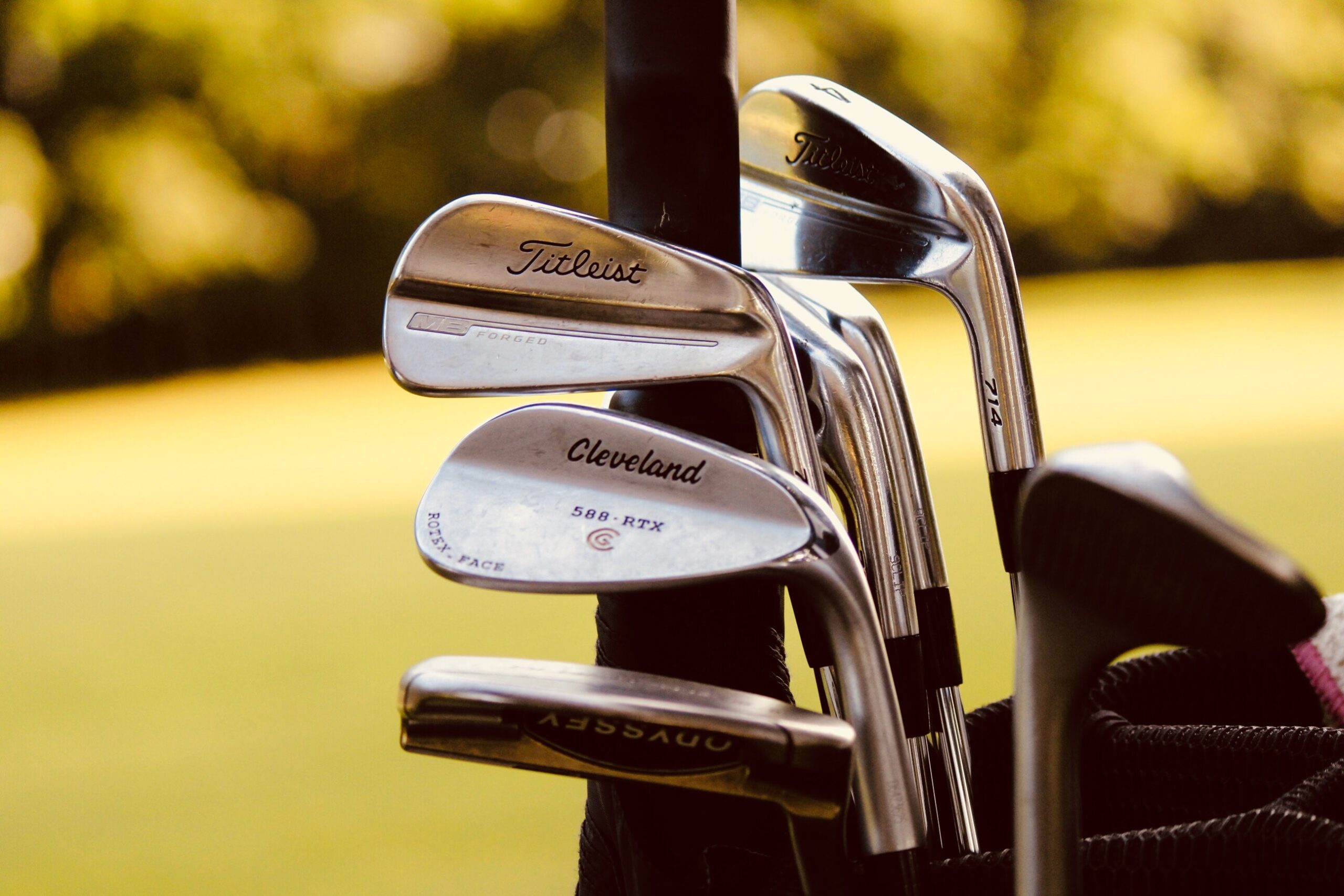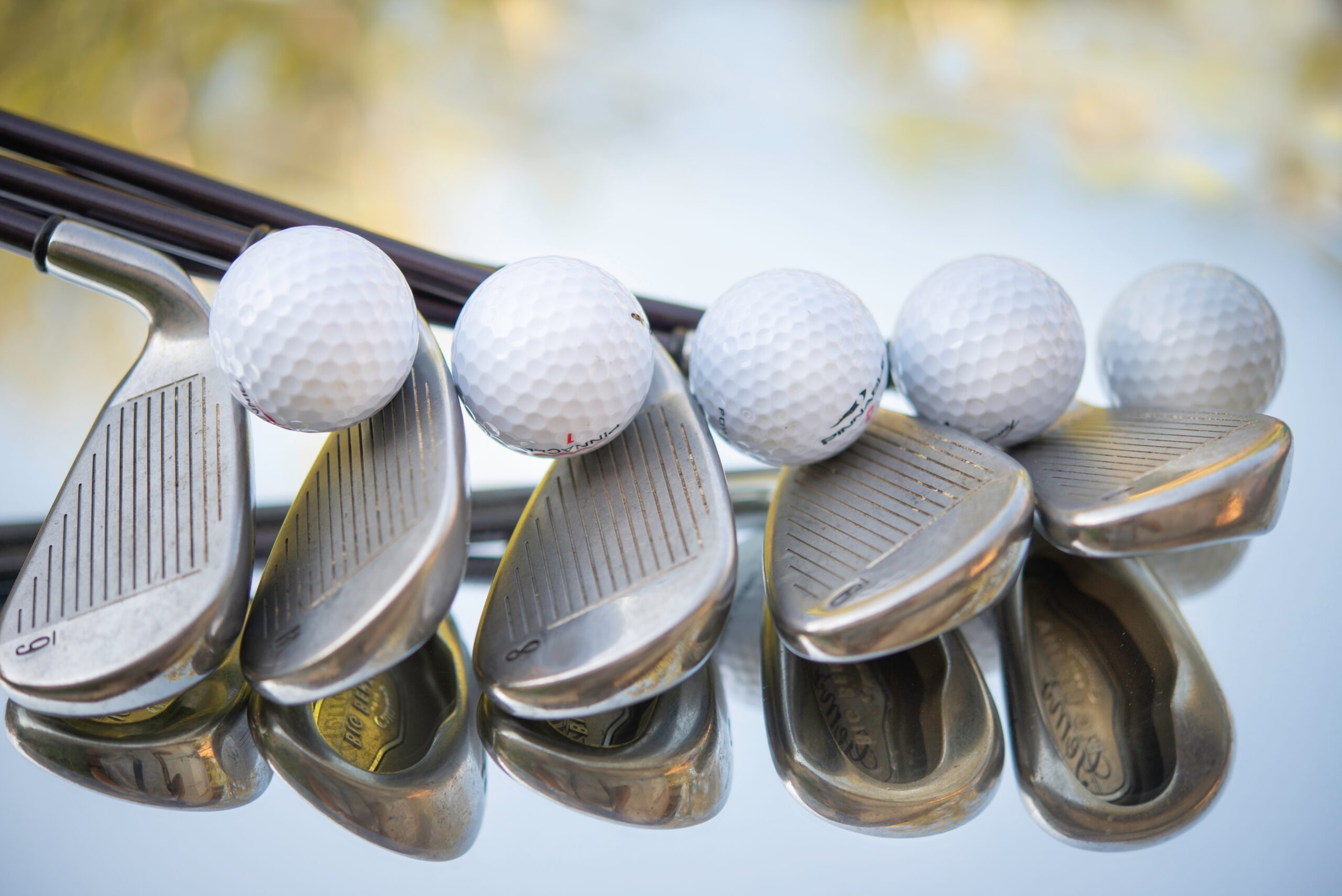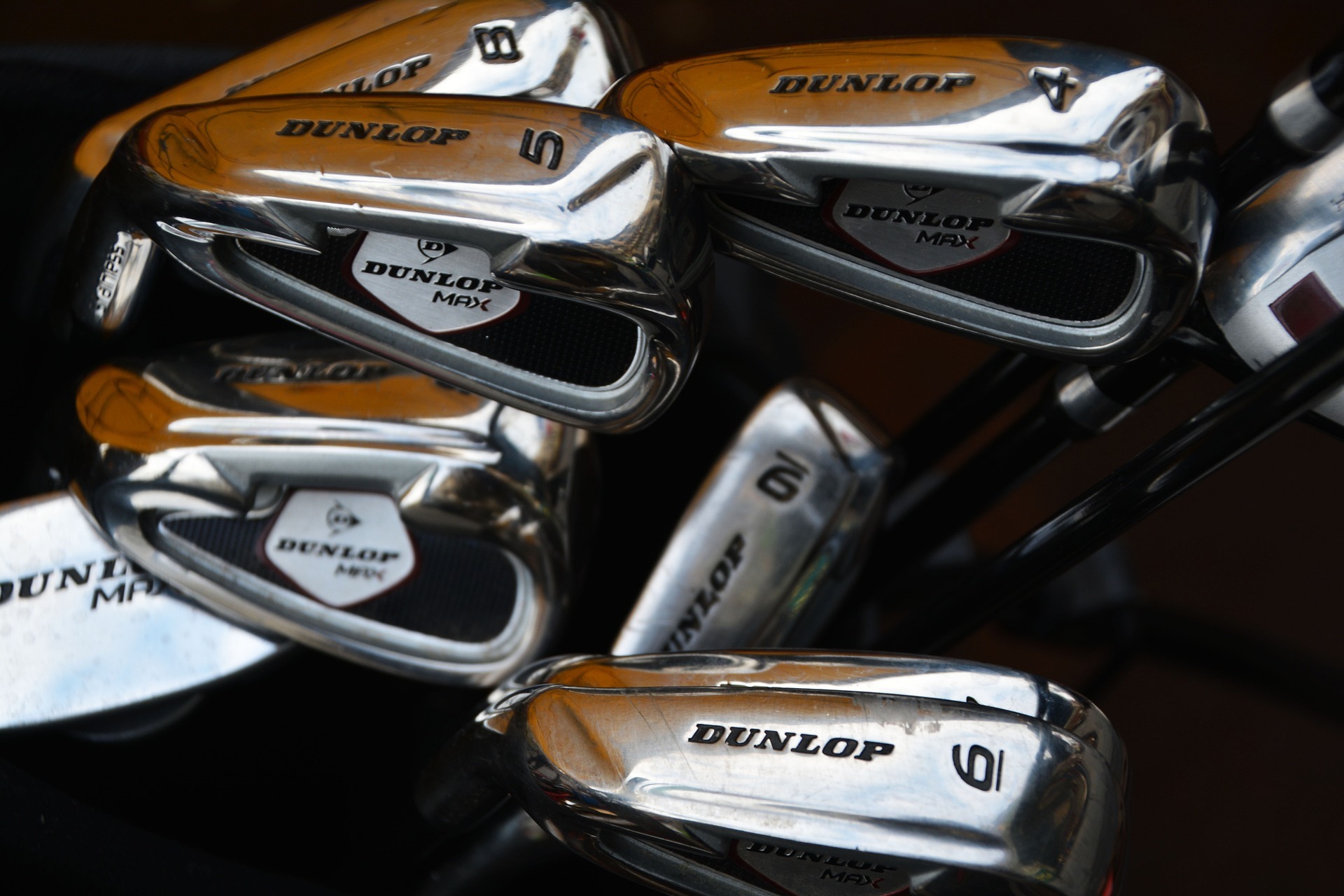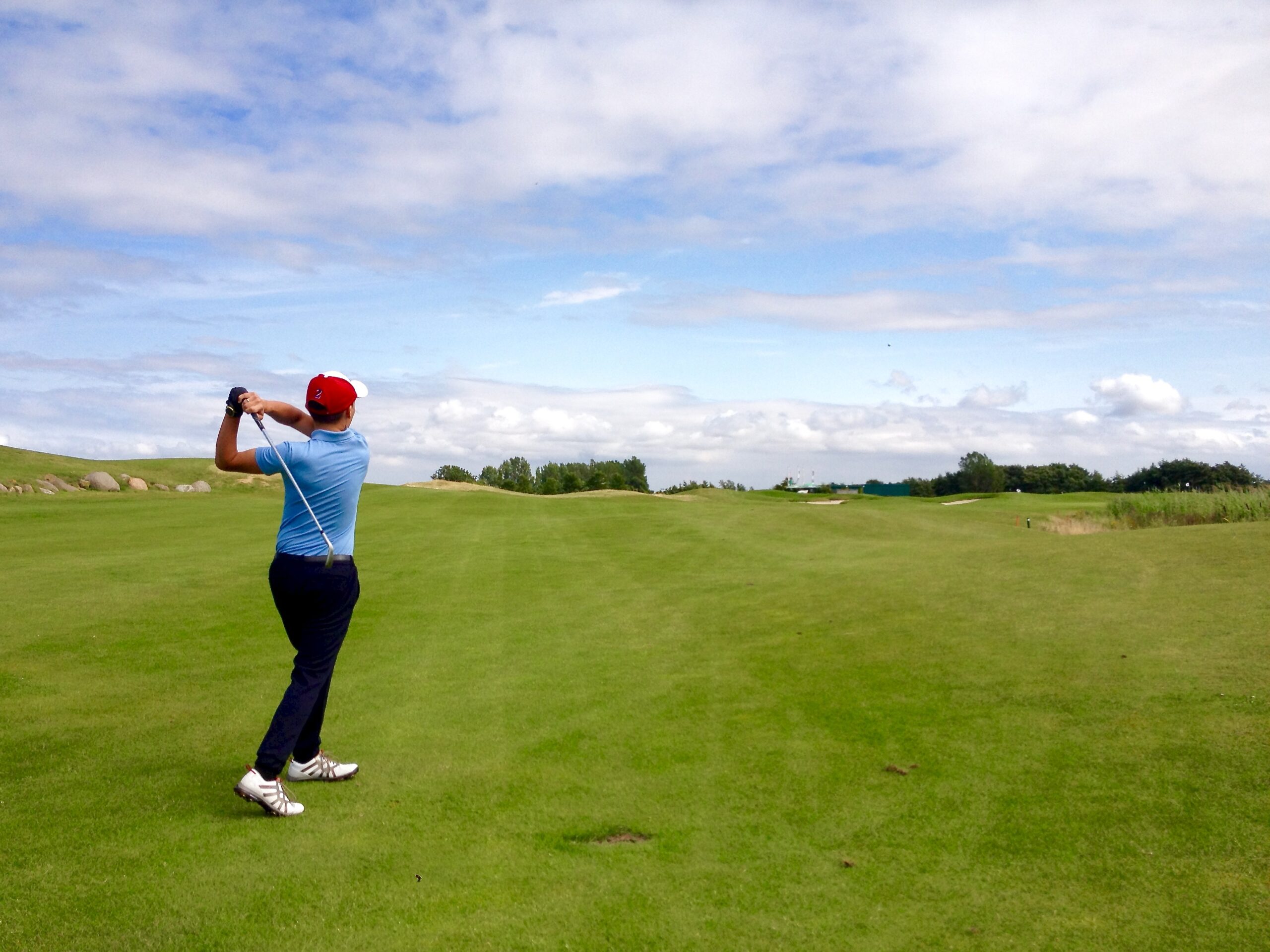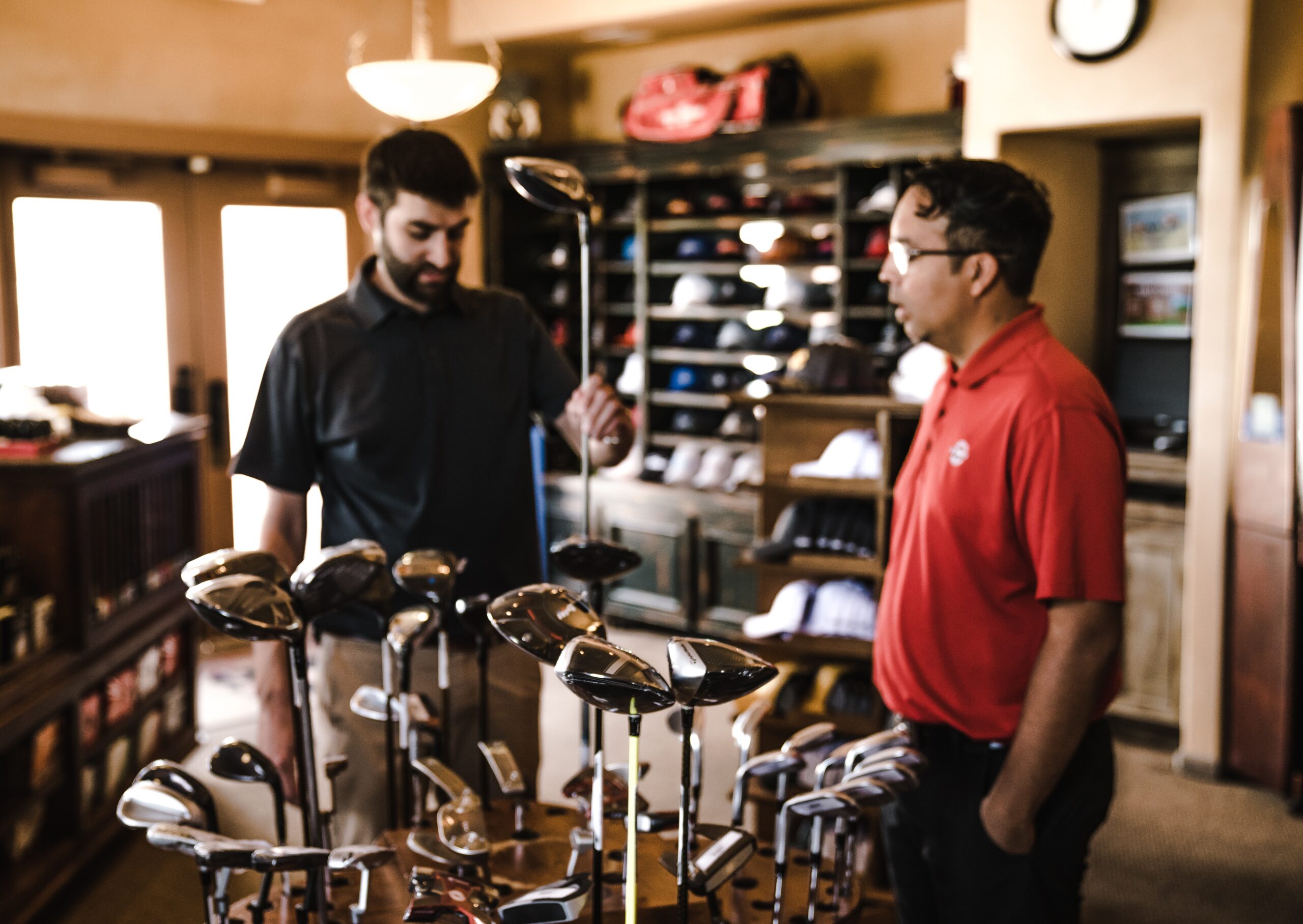Let’s be clear about one thing: golf clubs do not generally need to be of the same brand. It is more crucial to maintain consistency in other club aspects, including the shaft, length, and lie angle, rather than focusing on brand matching, which is an expensive approach. The primary consideration for all final club choices should be what produces the best outcomes. We’ll go over all you need to know about golf clubs in this post, if not in great detail.
Different Types of Golf Clubs
A typical golfer carries a variety of clubs in their bag. There are actually five different types of clubs used today: woods (including the driver), irons, hybrids, wedges, and putters.
Woods
The driver and fairway woods are included in the group of golf clubs known as “woods.” The woods are the clubs with the largest heads (usually hollow, stretching a few inches from side to side and a few inches from front to back, with rounded lines), as well as the longest shafts (although their clubheads are no longer constructed of wood, they are nevertheless referred to as woods). They are used for the longest shots, including swings made from the teeing ground, and golfers may swing them the fastest.
Irons
Irons are sold in sets of numbers, typically from 3-iron to 9-iron or pitching wedge. Compared to woods, they have smaller clubheads, especially in the front to back where they are comparably thin (leading to one of their nicknames: “blades”). The majority of irons have solid heads, however some have hollow ones. Irons have grooves on their “loft” or angled faces that aid in holding the golf ball and add spin. They are typically utilized for tee shots on short holes or strokes from the fairway. The loft increases as the number of an iron increases (5-iron, 6-iron, etc.), but the length of the shaft decreases.
Hybrids
The latest type of golf club is a hybrid. They existed for many years before the turn of the twenty-first century, but they didn’t become widely accepted until then. Imagine a hybrid’s clubhead as a cross between a wood and an iron. Thus, the term “hybrid” (they are also sometimes called utility clubs or rescue clubs). The number of a hybrid (e.g., “2 hybrid,” “3 hybrid,” etc.) corresponds to the number of the iron it replaces. Because many golfers find hybrids smoother to hit than the irons they replace, they are known as “iron-replacement clubs.” However, a golfer is most likely to choose hybrids in place of long irons if they do so (2-, 3-, 4- or 5-irons).
Putters
The most specialized golf clubs are putters, which also have the broadest range of sizes and designs. Putters are used for putting, naturally. They are the clubs that golfers use on the putting greens to make the final swings necessary to get the ball into the hole.
The club that is available in the most variety is the putter. That might be the case because picking a putter is a fairly subjective endeavor. No putter is ever “correct.” The putter that is best for you is the only option. Putters typically come in three clubhead styles and three length variations.
- Clubheads: Clubheads come in three different styles: standard blade, heel-toe, and mallet. Traditionally, the shaft enters towards the heel of the blade, making it shallow and narrow (although sometimes center-shafted). The general shape of heel-toe putters is similar to that of blades, but they contain additional weight at the heel and toe to add perimeter weighting, as well as other design features to help make the clubs more “forgiving” on miss-hits. Mallet putters have broad clubheads, which increase the forgiveness of weak contact. Mallets exist in a wide range of sizes and shapes, some of which are really big and odd.
- Lengths: Standard-length putters, sometimes known as “conventional putters,” are typically between 32 and 36 inches long from end to end. The most popular and recommended length for beginners is standard or conventional length. The grip-end of a belly putter is one whose length causes it to touch the golfer’s belly. Furthermore, long putters, sometimes known as broomstick putters, are in the upper 40- to lower 50-inch range and enable the player to stand more erect.
No matter their size or form, putters are all designed to get the ball moving smoothly and with the least amount of backspin possible to prevent skidding or skipping. The majority of putters do have some loft (typically 3 or 4 degrees).
Wedges
The pitching wedge, gap wedge, sand wedge, and lob wedge fall within the category of wedges. Due to the fact that they have the same clubheads as irons but are more sharply slanted for additional loft, wedges are both a distinct type of golf club and a subset of irons. The wedges in golf are the clubs with the most loft. They are utilized for playing out of sand bunkers, for chips and pitches around greens, and for shorter approach shots into greens.
Golf Club Numbers and What Do They Mean
Newbies and beginners to golf may find it a little challenging, which is understandable. Due to the game’s complicated rules, high learning curve, and equipment requirements, learning to play golf can be challenging. The significance of the various golf club numbers is a popular query from novices to the sport. The golf clubs’ numbers are as follows, ranging from 2 to 9:
Numbered Golf Clubs
- 3-wood
- 5-wood
- 2-iron
- 3-iron
- 4-iron
- 5-iron
- 6-iron
- 7-iron
- 8-iron
- 9-iron
Non-Numbered Golf Clubs
- Driver
- Putter
- Pitching Wedge
- Sand Wedge
- Lob Wedge
The loft, which is the angle of the golf club face, is what golf club numbers relate to. You can alter the height and distance that the golf ball will travel when struck by adjusting the loft. The golf ball will go farther at a lower height the lower the golf club number, the less loft, and the more acute the angle on the golf club face. The golf ball will travel higher but for a shorter distance the higher the golf club number, the more loft, and the more extreme the angle on the golf club face.
The game of golf, as you may be realizing, involves a lot of physics, so selecting the proper clubs for the right shot is crucial.
What Numbered Club to Use for Which Shot
We’ll go over which number of the club you should use for various shots. It should be noted that there are several playing styles, hence some people could not agree with this list. The following clubs are typically used in the following shot range:
- Driver = 230 yards
- 3-wood = 210 yards
- 2-iron/4-wood = 190 yards
- 3-iron/5-wood = 180 yards
- 4-iron = 170 yards
- 5-iron = 160 yards
- 6-iron = 150 yards
- 7-iron = 140 yards
- 8-iron = 130 yards
- 9-iron = 120 yards
- Pitching wedge = 110 yards
- Sand wedge = 90 yards
- Lob wedge = 65 yards
- Putter = Anything in the green
Wood Club vs. Iron Club
Wood Golf Clubs
Every hole starts with you teeing off with a long-range club called a wood golf club. In the second swing, use wood golf clubs for longer courses. The club head of a wood is large, round, and flat in the front, where you strike the golf ball.
Iron Golf Clubs
After teeing off, iron golf clubs are used; you can spot them by the sharp angle of the clubheads. Every golfer has more irons in their bag than any other type of club!
3 and 5-Wood vs. 3 and 5-Iron
A wood club and an iron club differ by the materials from which they are manufactured. The same loft angle will be shared by a 3-wood and a 3-iron, as well as a 5-iron and a 5-wood, despite the fact that they are composed of different materials and therefore better suited for various shots.
You might think that since iron is a substance harder than wood and makes up the 3 and 5-irons, they would be utilized for longer shots, but this is not the case. In general, a 3-wood is used for shots between 210 and 180 yards, and a 3-iron is used for shots between 180 and 210 yards. For a shot of around 180 yards, a 5-wood is utilized, and for a shot of about 160 yards, a 5-iron.
A 5-wood and 3-iron are both frequently used for the same distance shot, as you could have inferred from the numbers above. You should choose your club based on the loft you want the shot to have.
What Matters More
Results matter more than the brands of golf clubs used.
Having a bag of golf clubs from the same manufacturer is a wonderful experience. You might think you’re a fantastic player if you arrive at the first tee with a matching set of clubs because you assume that’s what all pros have, and if you have that as well, then you must be a very exceptional player, right? No, not always.
We all wish golf was that easy, but it shouldn’t come as a surprise to anyone who has played the game for any length of time because choosing the best set-up for your bag of clubs requires considerably more consideration than simply making sure that all of your clubs are from the same brand.
Golf clubs, among other things, are made up of a variety of variable elements or components like the club head and shaft in addition to the lie angle of the club, the length and loft of the club, the grip, and the brand of the club, all of which can affect the results you achieve with a specific club.
Because of this, concentrating only on whether or not your clubs are from the same brand could cause you to ignore many of the crucial club features that actually matter and will affect your game.
Golf sets with a range of golf brand names are not only permissible, but if done purposefully, they’ll ensure that you have the best set of clubs for your particular swing. The most important factor is to identify the particular shaft, length, loft, and other primary golf club attributes that work best together to provide the best results for each individual club.
Tips on Purchasing Your Golf Clubs
Although there are countless options, there are a few things you can check for to be sure you’re receiving high-quality golf clubs, regardless of your budget:
- Material: Stainless steel, carbon steel, or beta titanium should be used for club heads. Zinc-containing clubs or those made of a steel-and-aluminum composite won’t be able to survive the play’s rigors for very long and are probably only useful in junior sets.
- Quality of the manufacturing process: Try to stick with established brands in a price range you can afford because brand name manufacturers are regarded to retain tighter control over their quality. Look for less expensive companies that have a warranty if you don’t want to spend extra money.
- Method of production: In general, clubs that are forged will cost more and be of higher quality than clubs that are cast in a mold.
Conclusion
Professional golfers typically use considerably more uniform brand configurations throughout their whole set of clubs than amateur golfers do. This occurs frequently because professionals are legally required to play a specific brand of clubs since they are sponsored to do so. However, even professionals frequently mix club brands, particularly when using wedges and putters.
However, a thorough examination of the best 100 golfers on the PGA Tour reveals that, despite being paid to play, it is not a given that they all use the same brand of clubs.
Playing will surely help you understand more about golf and golf clubs. Applying this knowledge in the real world is the most effective approach to assimilate it.
